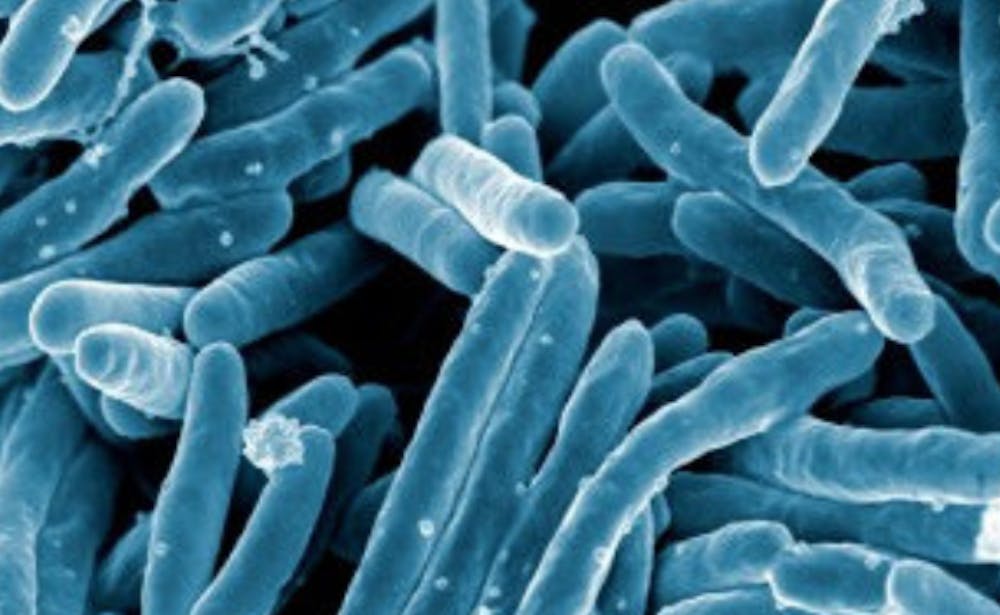A failed cancer drug may have just found a new use—fighting tuberculosis.
Drugs called matrix metalloproteinase inhibitors were found to increase the potency of antibiotics designed to treat tuberculosis, according to a study published April 26 in PLoS Pathogens. The paper paves the way for a possible alternative to the current regimen used to treat tuberculosis—a rigorous six-to-nine month cocktail of antibiotics.
“Our study opened this whole new playing field, suggesting that by understanding and targeting these host remodeling mechanisms, that might potentially open an opportunity to shorten the current therapy or even to treat the current resistant strains,” said Xiling Shen, associate professor in the department of biomedical engineering at Duke and co-senior author of the paper.
He explained that tuberculosis hijacks the host tissue to form granulomas—structures that provide a secure home for the invading bacteria—which are a key feature of tuberculosis infections. The bacteria may then lay dormant inside these “homes” for years before the host begins to show symptoms, according to the paper.
One way to prevent tuberculosis from gaining a foothold in the body is to prevent granuloma formation, Shen added.
Matrix metalloproteinases (MMPs) play a key role in shaping granulomas by making the blood vessels in the area “leaky,” which also makes drug delivery less efficient due to the lack of healthy blood vessels. This is one reason, he explained, the current treatment for tuberculosis is so extensive and can produce multidrug-resistant strains.
This led the researchers to wonder if MMP inhibitors could show promise in fighting tuberculosis. Although some of these inhibitors had been effective against cancer in studies, clinical trials were unsuccessful in replicating the results in humans.
Using a mouse model of tuberculosis, the researchers tested the inhibitors and found favorable results.
“We administered MMP inhibitors, and we discovered that by itself alone, it doesn’t do anything to the TB,” Shen said. “But, when we coupled that with the antibiotics, we can actually significantly increase the killing of the current antibiotics against the TB.”
Yitian Xu, a graduate student at Cornell University and lead author of the paper, noted that blood vessel health improved after MMP inhibitor treatment. This suggested that less leaky vessels allowed the antibiotic to reach the bacteria more efficiently, he explained.
Although the disease may not be on the mind of many Americans, Shen noted, tuberculosis is a major concern abroad. No other single infectious agent kills as many people worldwide as tuberculosis—around 1.7 million people died from the disease in 2015, and an estimated 10.4 million became infected, according to the Centers for Disease Control and Prevention.
Recent estimates from the World Health Organization have suggested that one-quarter of the world’s population is infected with the bacteria, with the vast majority of these cases being examples of dormant tuberculosis.
Shen indicated that this study expands upon much of the traditional work around tuberculosis, which is centered around improving antibiotics and vaccine development.
“Pharmaceutical companies have largely stopped developing any new antibiotics because the antibiotic is not profitable,” he said. “And it is often for a low-income population.”
Xu explained that there were still some hoops to jump through before the MMP inhibitor and antibiotic pairing can enter clinical trials. They must replicate these findings in other animal models such as rabbits and monkeys.
In addition, Shen said that they would also need to try the many combinations of inhibitor and antibiotic to find the pairing that leads to the most potent killing of bacteria.
“The significance of this work is to shorten drug treatment duration,” Xu said. “With our MMP inhibitors, we can reduce this bacterial burden to a safe level so that the treatment duration can be shortened.”
Get The Chronicle straight to your inbox
Sign up for our weekly newsletter. Cancel at any time.

